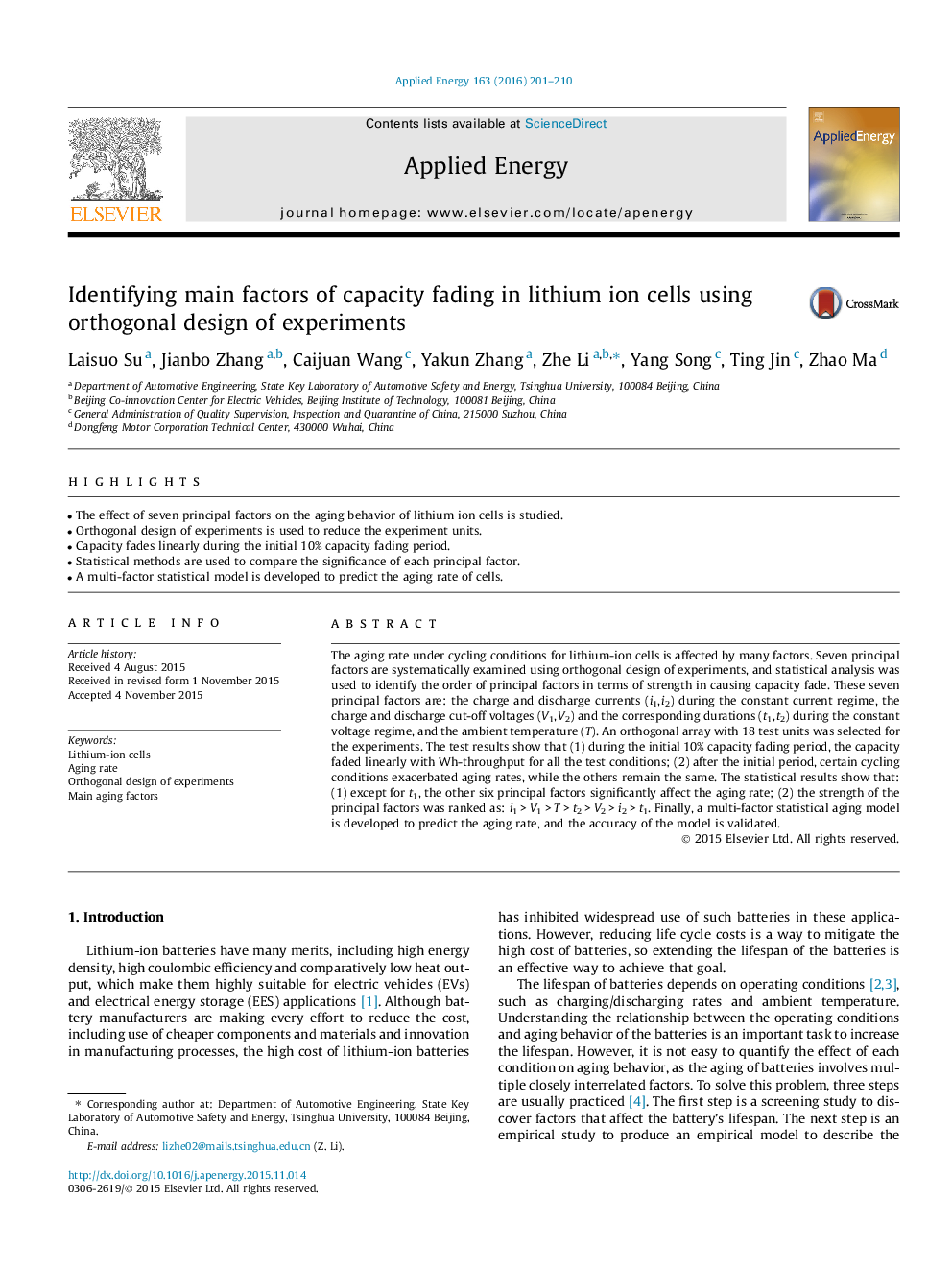| Article ID | Journal | Published Year | Pages | File Type |
|---|---|---|---|---|
| 6684497 | Applied Energy | 2016 | 10 Pages |
Abstract
The aging rate under cycling conditions for lithium-ion cells is affected by many factors. Seven principal factors are systematically examined using orthogonal design of experiments, and statistical analysis was used to identify the order of principal factors in terms of strength in causing capacity fade. These seven principal factors are: the charge and discharge currents (i1, i2) during the constant current regime, the charge and discharge cut-off voltages (V1, V2) and the corresponding durations (t1, t2) during the constant voltage regime, and the ambient temperature (T). An orthogonal array with 18 test units was selected for the experiments. The test results show that (1) during the initial 10% capacity fading period, the capacity faded linearly with Wh-throughput for all the test conditions; (2) after the initial period, certain cycling conditions exacerbated aging rates, while the others remain the same. The statistical results show that: (1) except for t1, the other six principal factors significantly affect the aging rate; (2) the strength of the principal factors was ranked as: i1 > V1 > T > t2 > V2 > i2 > t1. Finally, a multi-factor statistical aging model is developed to predict the aging rate, and the accuracy of the model is validated.
Keywords
Related Topics
Physical Sciences and Engineering
Energy
Energy Engineering and Power Technology
Authors
Laisuo Su, Jianbo Zhang, Caijuan Wang, Yakun Zhang, Zhe Li, Yang Song, Ting Jin, Zhao Ma,
